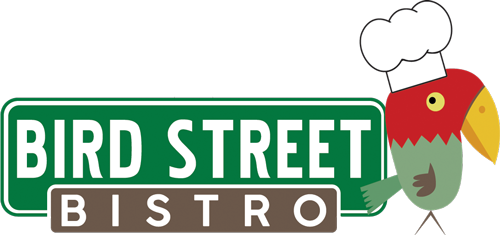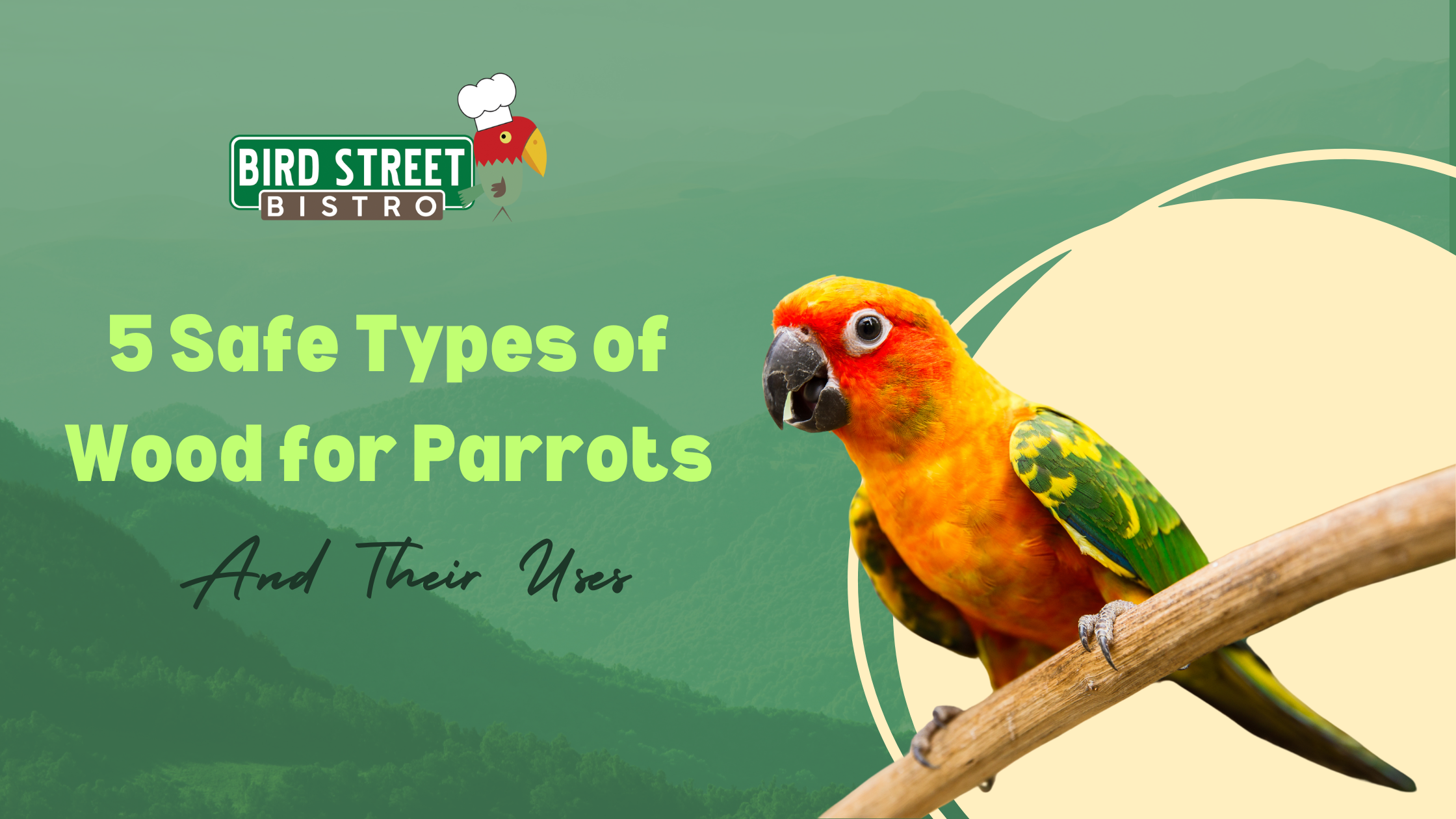5 Safe Types of Wood for Parrots and Their Uses
When choosing perches, toys, and other products for our birds, it’s important to understand which materials are safe and which aren’t. When it comes to wood, it’s important to consider some factors regardless if it’s considered safe or not. Always make sure whatever wood you’re using with your bird is not chemically treated or coated. You also want to take into consideration your bird’s size because some wood is better suited for smaller birds while some can withstand the power of larger beaks. You also want to look at your bird’s behavior and how it interacts with the objects around it when determining if something is safe.
There’s several types of wood that are safe for parrots, but here’s a few popular choices. I’ll include some links so that you can get information about more safe options.

Balsa comes from the tree Ochroma pyramidale, commonly referred to as the balsa tree. It’s native to the Americas and can grow 30m tall. It’s classified as a hardwood, but the wood itself is actually pretty soft and lightweight. Because of this, it’s widely used in wood carving and whittling since it can be manipulated easily. You can easily find blocks of balsa wood in many stores and online marketplaces. However, if you’re not buying from a trusted, known source, just make sure it’s not chemically treated or coated.
Its softness makes it ideal for smaller to medium sized parrots when it comes to chewing and shredding. Balsa is typically used in toy making. It can be used safely for perches, but it probably won’t last very long against chewers. Your money is likely better used for balsa toys than perches with the exception maybe being budgies. But even then, some budgies are championship chewers! Large parrots would probably enjoy snapping it to pieces, but you’ll likely only get a few seconds of interaction before it is utterly destroyed by a Macaw or Cockatoo. You can get more value for your money if you choose stronger pieces of wood for large birds. However, Balsa wood can provide a lot of enrichment for smaller birds because of how easy it is for them to manipulate.

Pine wood is the timber that comes from any conifer tree or shrub in the genus Pinus. They’re considered Evergreens and can grow anywhere from 3m to 80m tall. When it comes to choose which pine to use for your birds, keep in mind that much of the pine that is sold in general stores is treated chemically and fresh pine can contain a sticky resin, so it’s important to get it from a trusted source and make sure it’s safe for your bird. If you’re gathering pine on your own for your birds, make sure that no chemicals were used on the tree like pesticides, and remove the sap from the wood before offering it to your bird.
Pine is considered a moderately soft wood. It’s not as soft as balsa, so it might last a little longer when used for toys. Many perches are made of pine as well, but they can be chewed through reasonably fast by large birds if they have a habit of doing so. Some birds don’t chew on their perches, but some definitely do.

Maple is the commonly used word for trees and shrubs of the genus Acer. It’s a member of the soapberry family, Sapindaceae. Species of this family are mostly native to Asia, but there are also many from Europe, northern Africa and it's widespread across the eastern area of North America. Maple is used for several things such as furniture, flooring, and even musical instruments like the violin. It is easy to stain and is aesthetically pleasing to the eye making it a very popular choice for use in home decor.
Maple should have the bark removed for safety before birds chew on it. This would probably already be done if you are buying products from a vendor and aren’t getting the wood yourself. As always, ask questions if you are unsure. Maple is considered a hardwood, so it can withstand force from birds with more powerful beaks than the little guys. Because of this, large birds can get a lot of use from toys made from it. However, it’s more commonly used to create perches.

The word Manzanita is used for species of the genus Arctostaphylos, which are evergreen shrubs and trees from the western part of North America. They are a heartier species because they can grow in areas where water is more scarce and soil isn’t ideal. Some of the berries that grow on its branches are edible and are also used as decorative pieces. Manzanita also makes great firewood because of its density which makes it more resistant to burning quickly. Many aquarium enthusiasts also use it in their aquariums as a driftwood because of its attractiveness and the fact that it is more chemically neutral and resistant to rot.
Manzanita wood isn’t easy to cure because of its tendency to crack against the grain, so it isn’t really used for lumber. However, it IS great for perches! It’s got a beautiful reddish color but also a smooth yet varied texture making it perfect for parrot feet. It can last for many years making it a great value for anyone’s budget. It has become one of the most popular choices of wood for use in constructing parrot perches and stands. It can also be used to create longer lasting toy parts in comparison to balsa and pine.

Java wood comes from trees native to the island of Java, Indonesia. It is taken from trees that are no longer producing coffee beans which makes it an attractive choice not only for its hardiness - but also because many consider the method of acquiring it as more environmentally friendly than those that are used for other types of wood. Older trees that are no longer productive would normally get cut down, destroyed, and replaced with new ones, but in this case, they are instead recycled by cutting them up and harvesting their wood for use in other ways. The benefit being that other healthy trees are not being cut down to meet new demand. This is not only a more environmentally sustainable business model, but it also provides a supplemental income to farmers in the area when their old trees are purchased.
Java wood has a very wide range of applications and makes an exceptionally strong wood for bird perches. Many of the large tree stands that are sold for parrots are made with Java wood. It can be pricier than other options, but it’s probably the toughest and most break-resistant wood you can find on the market that’s safe for parrots. If you’re looking for longevity in wood and perch making, Java is a great option. You can certainly use it in toy making, but a bird might get bored of a toy it can’t shred or chew up very much. It would likely sit in the cage and get stale for the bird. But then again, every bird is different and some may enjoy swinging, manipulating, and moving around a toy made from Java depending on the mechanism of play. In most cases, however, it’s best used in perch making.

Nutrition also matters when looking at the overall health of our birds. That's why Bird Street Bistro offers a line of healthy, tasty food for pet birds everywhere. For example, our Colorado Green Harvest- Feast on The Fly featuring wholesome ingredients straight from our own backyards and nearby farms in beautiful Northern Colorado!
Helpful Links
Here are some websites I have found helpful as I have learned about different types of wood and their safety. I won't guarantee that any of these sources are 100% accurate, but they can be helpful in aiding in your search for knowledge.
- A fantastic list of wood and information about their safety created by Mario D. Vaden, horticulturist and consultant - https://mdvaden.com/bird_page.shtml
- Choosing a selection results in a full page refresh.
- Press the space key then arrow keys to make a selection.


